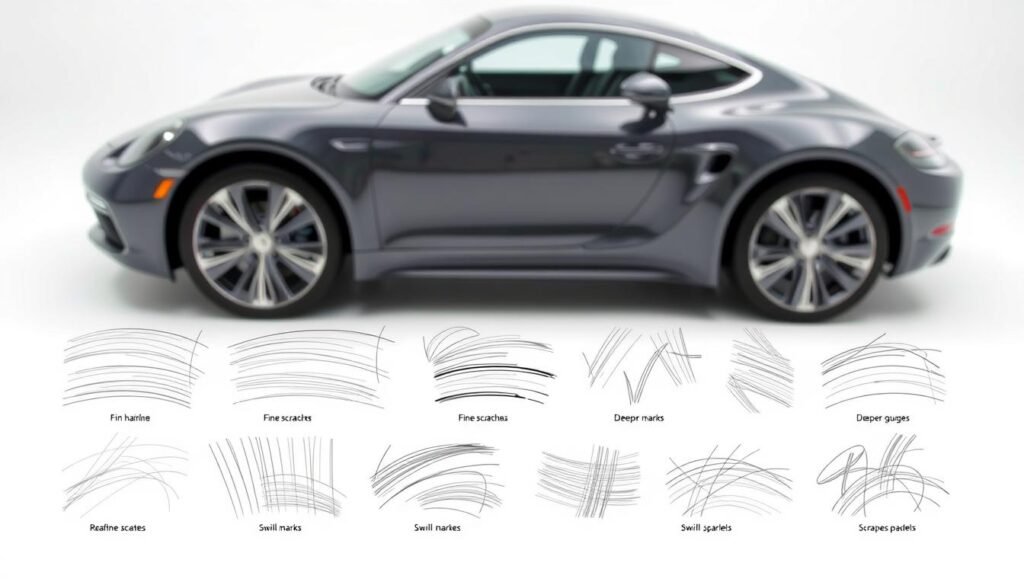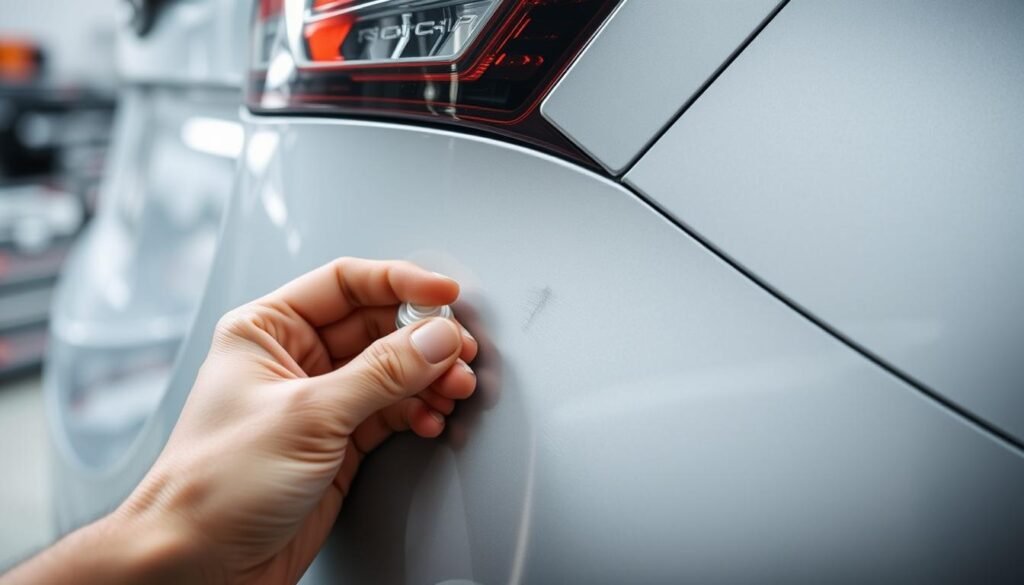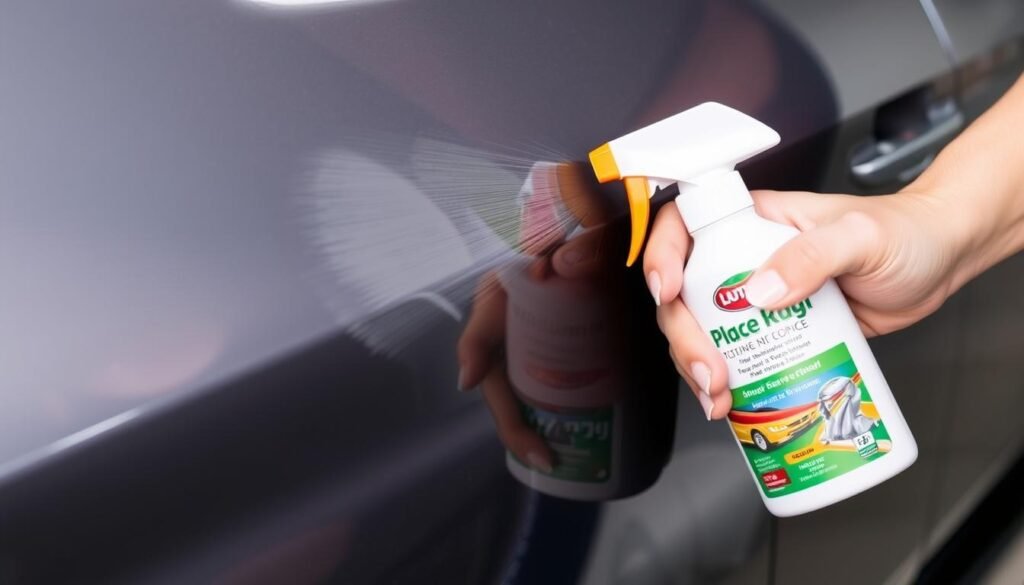Have you ever walked back to your car only to find an unsightly scratch on its once flawless paint? It’s a frustrating experience that can happen to anyone, and it’s natural to wonder about the costs involved in restoring your vehicle‘s appearance.
The truth is, repair costs for scratches can vary widely depending on several factors, including the depth, size, and location of the damage. Understanding these factors is crucial before making any decisions about how to proceed with repairs.
This comprehensive guide will walk you through the different types of scratches and their associated repair costs. We’ll cover both DIY and  professional repair options to help you make an informed decision.
professional repair options to help you make an informed decision.
Key Takeaways
- Factors that influence the cost of scratch repair on your car
- Different types of scratches and their associated repair costs
- DIY vs. professional repair options for car scratches
- Tips for preventing future scratches and unnecessary repair expenses
- How understanding the true cost of scratch repair can help you budget
Understanding Car Scratches and Their Impact
Car scratches are more than just a cosmetic issue; they can have significant long-term effects on your vehicle’s overall condition. When your car’s paint is scratched, it exposes the underlying layers to environmental factors, potentially leading to more serious damage over time.
Why Car Scratches Matter
Scratches on your car can affect more than just its appearance. If left untreated, they can lead to rust and corrosion, compromising the structural integrity of your vehicle. Moreover, even minor scratches can significantly reduce your car’s resale value, especially if it’s a luxury or newer model.
The protective layers of your car’s paint system are designed to shield it from damage. However, when scratches occur, these layers are compromised, making your car more susceptible to further damage from the environment.
Common Causes of Car Scratches
Car accidents are a common cause of scratches, but they’re not the only culprit. Other causes include road debris, parking lot incidents, and improper washing techniques. Even environmental factors can lead to scratches on your car’s surface.
A detailed look at the common causes reveals that:
| Cause | Description | Prevention Tip |
|---|---|---|
| Road Debris | Chips and rocks that fly loose from the road or larger vehicles. | Maintain a safe distance from larger vehicles. |
| Parking Lot Incidents | Minor bumps from other cars or objects. | Park in less crowded areas. |
| Improper Washing | Aggressive scrubbing or using dirty cloths. | Use soft cloths and gentle cleaning products. |
Understanding these causes can help you take preventive measures to protect your car’s paint and surface.
Types of Car Scratches You Should Know
Not all car scratches are created equal, and knowing the types can help you determine the best course of action for repair. Your car’s paint job is made up of multiple layers, including a clear coat, paint, and primer. The depth and severity of a scratch determine the complexity and cost of the repair.

Scuffs and Clear Coat Scratches
Scuffs and clear coat scratches are the most superficial types of damage. They typically appear as light marks on the surface and do not penetrate beyond the clear coat layer. Since the clear coat is the outermost layer, scratches here are the easiest and cheapest to repair. These scratches are often barely noticeable and can usually be buffed out or repaired with minor touch-ups.
Paint Layer Scratches
When a scratch penetrates through the clear coat and into the paint layer, it becomes more serious. Paint layer scratches often reveal the primer underneath, which is usually white. This type of scratch requires more effort to repair, as it involves touching up the paint. The cost increases because the repair needs to match the original paint color as closely as possible.
“The key to a successful repair is not just fixing the scratch but ensuring that the repair blends in with the surrounding paint.”
Primer Layer Scratches
Scratches that reach the primer layer are more severe and can expose the metal underneath if they are deep enough. Primer layer scratches are more challenging to repair because they require not only paint touch-ups but also possibly reapplying primer. Prompt action is necessary to prevent rust from forming on the exposed metal.
Deep Scratches Exposing Metal
The most severe type of scratch is one that exposes the metal frame of your car. These scratches are not only unsightly but also pose a risk of rust, which can lead to more extensive and costly repairs if not addressed promptly. Deep scratches require significant repair work, including applying primer, paint, and clear coat, making them the most expensive to fix.
Understanding the type of scratch on your car is crucial for determining the appropriate repair method and cost. By identifying whether a scratch is a scuff, a clear coat scratch, a paint layer scratch, or a deep scratch exposing metal, you can better assess what needs to be done to restore your vehicle’s appearance and prevent further damage.
How Much Does It Cost to Fix a Scratch on Your Car?
When it comes to repairing car scratches, the cost can be as varied as the types of scratches themselves. The price you pay to fix a scratch on your car depends on several factors, including the type of scratch, its depth, and the repair method used.
Cost to Repair Scuffs and Clear Coat Scratches ($150-$300)
Minor scuffs and clear coat scratches are the least expensive to repair, with costs ranging from $150 to $300. These types of scratches typically only affect the clear coat layer and can often be buffed out or touched up with a simple paint job. Auto body shops usually charge within this range for such repairs.

Cost to Repair Paint Layer Scratches ($400-$1,000)
Scratches that penetrate through the clear coat and into the paint layer are more costly to repair. The entire panel may need to be repainted, which can drive up the cost to between $400 and $1,000. The exact cost depends on the size of the scratch and the complexity of the paint job required.
Cost to Repair Primer and Deep Scratches ($800-$2,500)
Deep scratches that expose the primer or metal underneath are the most expensive to fix. Repairing these scratches involves more extensive work, including sanding, applying primer, and repainting. The cost for such repairs can range from $800 to $2,500, depending on the severity of the scratch and the materials needed.
Additional Costs to Consider
Beyond the initial repair cost, there are other factors that can increase the total expense. These include the need for specialty paints, custom color matching, and blending the repair with adjacent panels. Additionally, the cost can vary depending on whether you choose a dealership, an independent body shop, or a mobile repair service. Geographic location also plays a role, with urban areas typically charging more than rural locations.
Understanding these factors can help you make a more informed decision about how to proceed with repairing scratches on your car.
Factors That Affect Car Scratch Repair Costs
Understanding the factors that influence car scratch repair costs can help you budget accordingly. The cost of repair will largely depend on the type of scratch you have on your car. Several factors can impact the cost of repairing a scratch on your vehicle.
Vehicle Make and Model
The make and model of your car play a significant role in determining repair costs. Luxury and exotic vehicles typically cost more to repair due to specialized paint formulations and higher labor rates for technicians with specific expertise.
Scratch Location and Size
The location and size of the scratch on your vehicle also affect repair costs. Scratches that span multiple panels or are on curved surfaces are more expensive to fix than those on flat, single panels. The size and severity of the scratch directly correlate with labor time and materials needed.
Paint Type and Color
Special paint types, such as metallic, pearl, or matte, and rare colors can significantly increase repair costs. This is due to the difficult process of matching and applying these unique paints.
Your Geographic Location
Your geographic location impacts pricing through regional labor rate differences. Metropolitan areas typically charge more than rural locations. Seasonal factors might also affect pricing, with some shops offering discounts during slower periods.
Other factors that can influence repair decisions include the age of your vehicle. Older cars may not warrant expensive repairs that exceed the vehicle’s value. Being aware of these factors can help you make informed decisions about your car’s maintenance.
- Luxury vehicles require specialized paint and labor, increasing costs.
- Scratches on complex surfaces or multiple panels are pricier to repair.
- Special paint types and rare colors complicate the repair process.
- Geographic location affects labor rates and pricing.
DIY Car Scratch Repair Options
DIY car scratch repair can be a cost-effective solution for minor scratches, but it’s essential to know when to attempt it. Not all scratches are suitable for DIY repair, and understanding the limitations is crucial.
When to Consider DIY Repairs
You should consider DIY repairs for minor scuffs and clear coat scratches. These types of scratches are typically superficial and can be effectively treated with DIY methods. However, deeper scratches that expose the paint layer or primer require professional attention.

Toothpaste Method for Minor Scratches
For minor scratches, the toothpaste method can be an effective DIY solution. Start by washing and drying the area, then apply toothpaste to a microfiber towel and rub it into the scratch in circular motions. Wipe off the excess and repeat if necessary until the surface is smooth.
Using Commercial Scratch Removers
Commercial scratch removers are another option for DIY scratch repair. To use these products, start with a freshly washed car and apply the remover to the scratch using a cloth or microfiber in circular motions. Clean away the excess and repeat until the scratch is gone.

DIY Touch-Up Paint Application
For scratches that require paint touch-up, start by sanding down the scratch and rinsing away debris. Apply primer if necessary, then use touch-up paint to match the color. Apply additional coats as needed and finish with a layer of wax to seal.

While DIY car scratch repair can be cost-effective, it’s not without risks. Improper application can lead to more noticeable damage. It’s also important to have realistic expectations; DIY methods work best for minor surface scratches.
Professional Scratch Repair Services
Professional scratch repair services can restore your vehicle’s appearance and protect it from further damage. When your car suffers from unsightly scratches, it’s essential to choose the right repair service to ensure a high-quality finish.
Auto Body Shops vs. Dealerships

Auto body shops and dealerships are two primary options for professional scratch repair. Auto body shops are often more affordable and can offer personalized service. Dealerships, on the other hand, provide manufacturer-approved repairs but at a higher cost. When deciding between the two, consider factors such as the extent of the damage, your budget, and the importance of maintaining your vehicle’s warranty.
Mobile Scratch Repair Services
Mobile scratch repair services offer the convenience of on-site repairs, saving you time and hassle. These services are ideal for minor scratches and can be more cost-effective. However, they may have limitations in terms of the complexity of repairs they can handle.
What to Ask Before Hiring a Professional
Before hiring a professional for scratch repair, it’s crucial to ask the right questions. Inquire about their experience with your vehicle’s make and model, their paint matching capabilities, and the techniques they use. Ask about their warranty policies and the estimated time for completion. Checking reviews, certifications, and examples of previous work can also help you evaluate their expertise.
Additionally, understanding how insurance claims work for scratch repairs can help you make an informed decision. For minor scratches, it might be more cost-effective to pay out-of-pocket rather than filing a claim, which could impact your insurance premiums.
Preventing Future Car Scratches
To keep your car looking its best, it’s essential to understand how to prevent scratches from happening in the first place. While some scratches are a normal part of vehicle ownership, there are several strategies you can employ to minimize their occurrence.
One of the simplest ways to prevent car scratches is by being mindful of your parking habits. Choosing parking spots away from high-traffic areas and cart returns can significantly reduce the risk of scratches. Additionally, giving yourself plenty of space when driving can help you avoid potential scratch-causing situations.
Using protective products like paint protection film and ceramic coatings can create a physical barrier against scratches. These products can be especially useful in protecting your car’s paint surface from damage caused by road debris and other environmental factors.
Proper car washing techniques are also crucial in preventing scratches. Using microfiber materials and a proper washing motion can minimize the risk of scratching your car’s surface. Regular maintenance like waxing provides an additional protective layer against minor scratches.
Defensive driving practices, such as maintaining a safe distance from other vehicles and being aware of your surroundings, can also help reduce exposure to road debris and potential scratch-causing situations. Furthermore, storing your car in a garage and keeping it organized can prevent accidental scratches from household items.
Seasonal considerations, such as winter salt and summer tree sap, require different protective approaches. Applying a paint protection film can save you time and money on car scratch repair, while also protecting your car against rust that can occur when deep scratches are left unrepaired.
By investing in these preventative measures, you can maintain the resale value of your car and keep it looking its best. A cost-benefit analysis of preventative measures versus potential repair costs can help you make informed decisions about investing in protection for your vehicle.
FAQ
What factors determine the cost of scratch repair on my vehicle?
The cost to repair scratches on your car is influenced by the type and depth of the scratch, the location and size of the damage, the make and model of your vehicle, and the paint type and color.
Can I repair minor scratches on my car myself?
Yes, you can attempt to repair minor scratches using DIY methods such as the toothpaste technique or commercial scratch removers. However, for more extensive damage, it’s recommended to consult a professional.
What is the difference between a clear coat scratch and a paint layer scratch?
A clear coat scratch affects only the clear coat layer, while a paint layer scratch penetrates to the paint layer. The latter requires more extensive repair, including repainting the affected area.
Will my auto insurance cover the cost of scratch repair?
Generally, insurance coverage depends on your policy terms. If the scratch is a result of an accident, it might be covered. However, for minor scratches, you’ll likely need to pay out-of-pocket.
Can I prevent scratches on my car’s surface?
While it’s impossible to completely prevent scratches, you can minimize the risk by regularly washing and waxing your car, parking in a safe location, and avoiding tight parking spaces.
What should I look for when hiring a professional to repair scratches on my car?
When selecting a professional service, consider factors such as their experience with your vehicle’s make and model, the quality of their work, and customer reviews. Ensure they provide a detailed estimate and explain their repair process.
Are mobile scratch repair services a viable option for me?
Mobile services can be convenient, especially for minor repairs. However, for more complex jobs, a traditional auto body shop might be more suitable due to their comprehensive facilities and expertise.